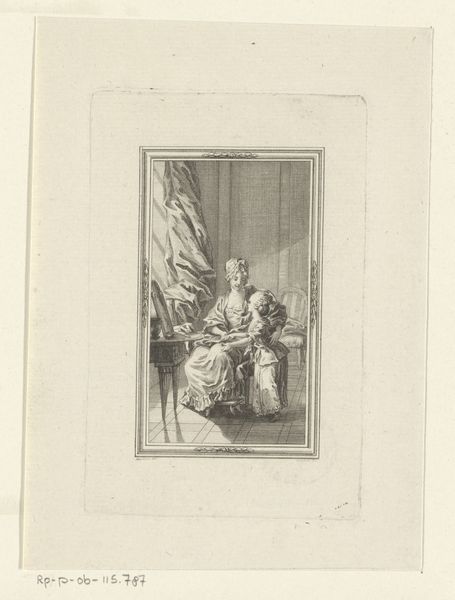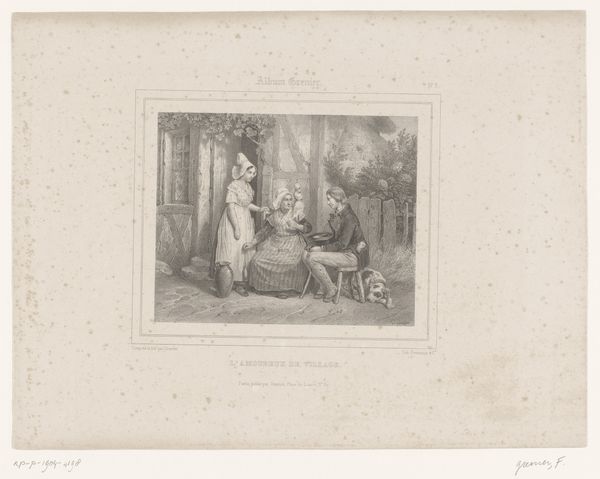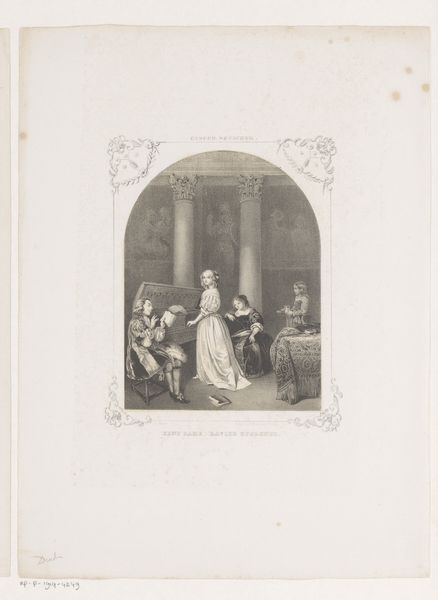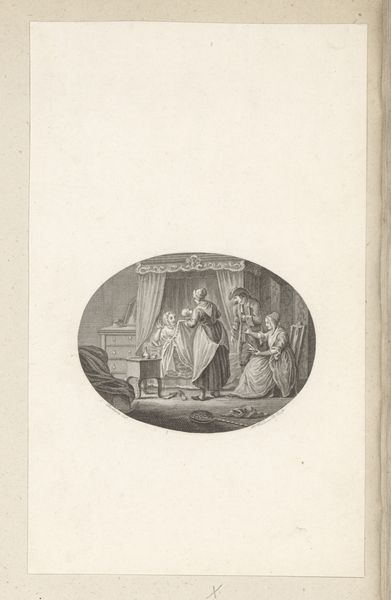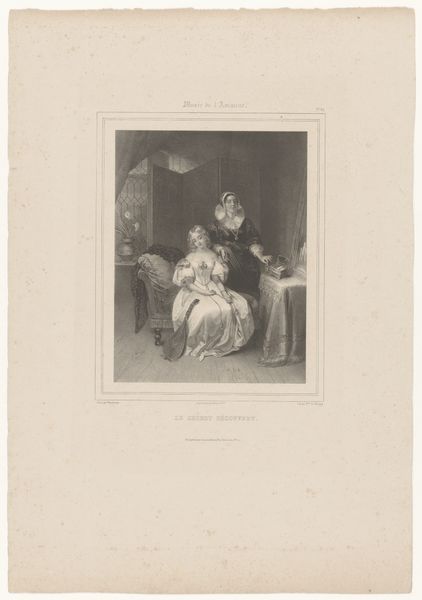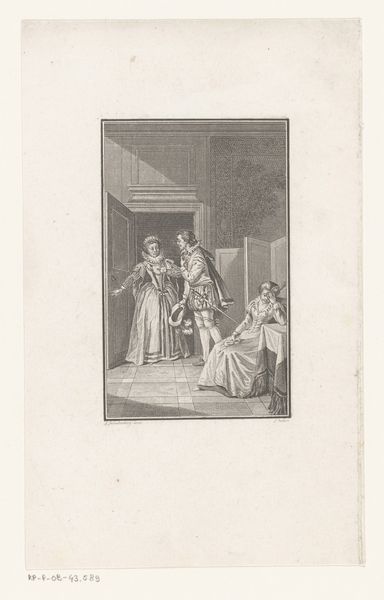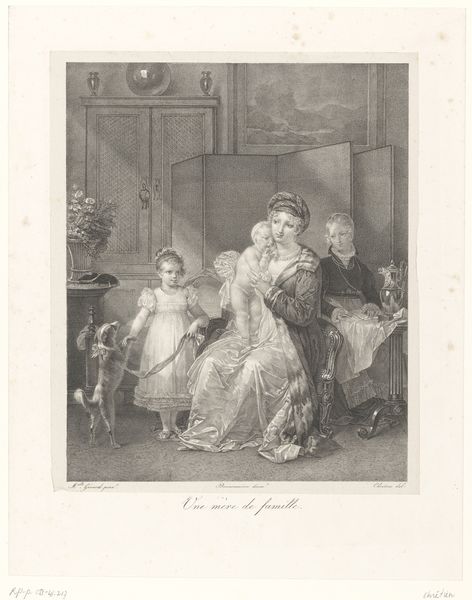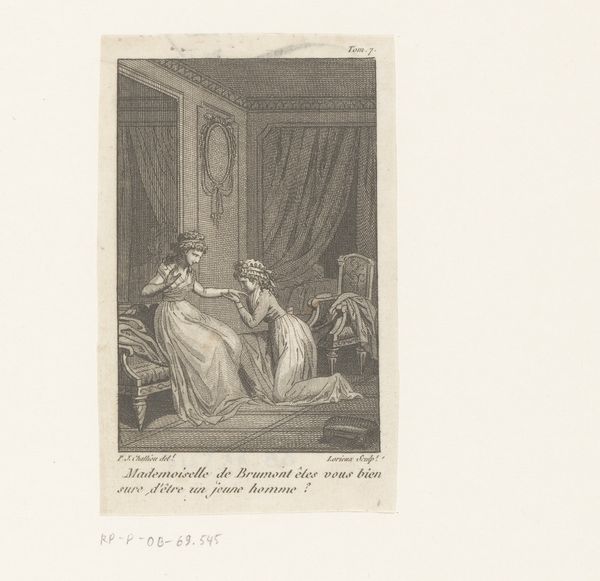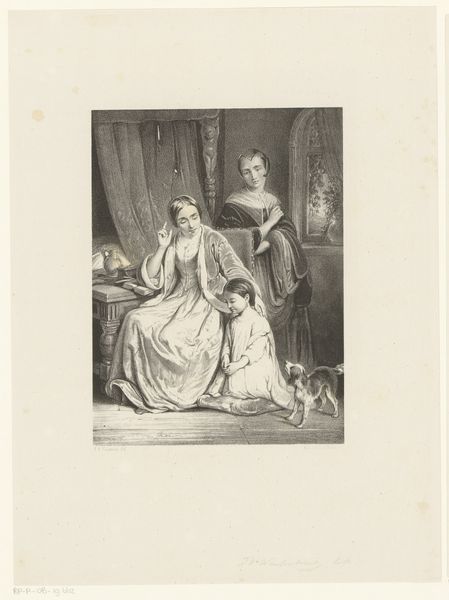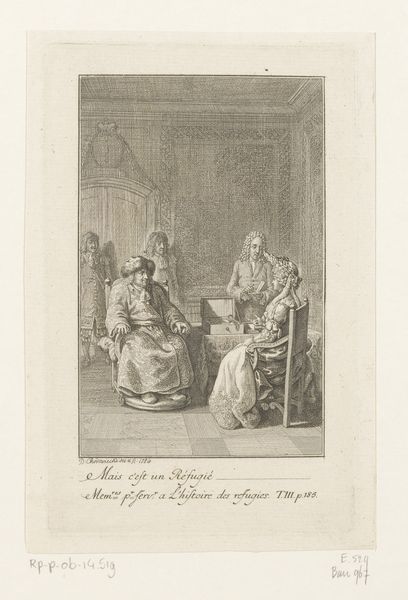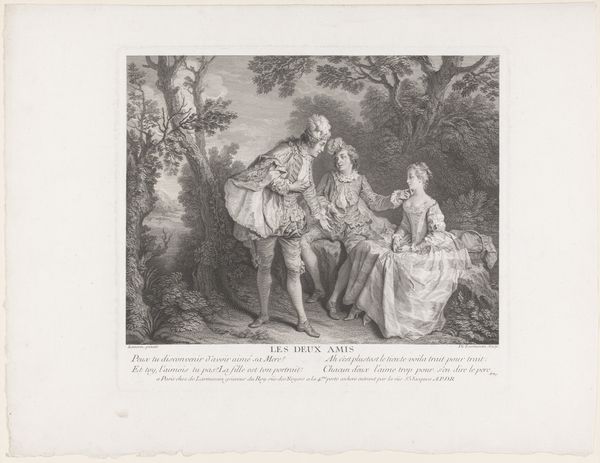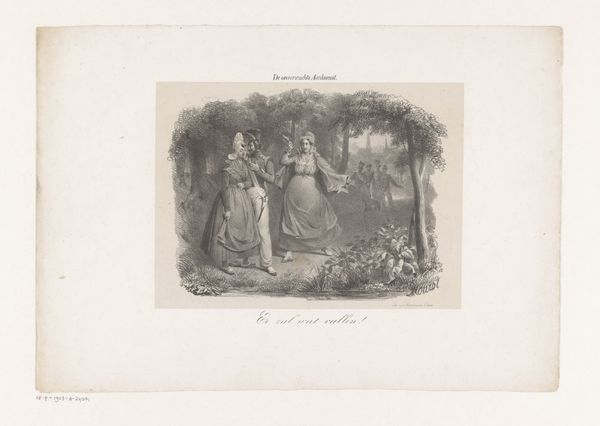
Familieportret van Franz Alexander von Kleist met zijn vrouw Albertine en twee kinderen 1797
0:00
0:00
drawing, print, engraving
#
portrait
#
drawing
# print
#
romanticism
#
history-painting
#
academic-art
#
engraving
Dimensions: height 162 mm, width 100 mm
Copyright: Rijks Museum: Open Domain
Curator: This is "Family Portrait of Franz Alexander von Kleist with his Wife Albertine and Two Children," an engraving executed in 1797 by Johann Friedrich Bolt. What strikes you immediately about this intimate family scene? Editor: The overwhelming sense of stillness. It feels like a carefully constructed tableau, a moment frozen in time but devoid of genuine emotion. The two parents, centered, look dreamily into each other’s eyes, as if nothing else matters. Is it simply a snapshot, or is something else at play here? Curator: Considering the era, it's far from a candid shot. Family portraits like these, commissioned during the late 18th century, served as visual testaments to social standing and domestic virtue. We see this reflected in the choice of clothing, posture and surrounding greenery. Editor: Right, the controlled setting definitely underscores that. Look at the melancholic expression of the elder daughter to the side; the slight, averted gaze almost pulls her from the center of the harmony. This highlights some complex layers regarding visibility and performance within family structures. Curator: Absolutely. We can think about the politics embedded within such portraits. Consider the historical context – the societal emphasis on familial lineage and the roles within marriage were central to the aristocratic classes during that period. An engraving like this served a role in affirming such roles. Editor: It makes me wonder about the labor of creating such imagery, too. How was family identity presented at the time, who held power to choose such presentation and what implications do these images have in colonial times. Curator: These are extremely pertinent considerations. The seemingly serene domestic scene becomes a lens through which we can interrogate the broader structures of power. We can consider class, wealth and position and how portraiture served those in power. Editor: It really compels me to rethink how we internalize those ideals of the perfect nuclear family, especially when viewing such controlled artwork. These family structures should be more often looked at and problematized within academic research. Curator: A worthwhile goal, for certain. When viewed from this contemporary standpoint, Bolt’s family portrait delivers more than just historical interest. It presents an ongoing reminder that families have always existed at a meeting point between private feelings and societal performance. Editor: Agreed, thinking about it has really complicated how I saw it when we started. Thank you!
Comments
No comments
Be the first to comment and join the conversation on the ultimate creative platform.
